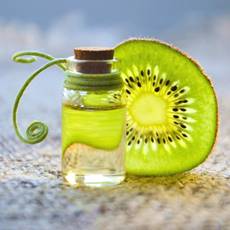Indoor Plants Benefits
Mental and physical health benefits of indoor plants
Fact Checked
×All the content published in our website is fact checked to validate its accuracy.
Visit our guidelines web page to learn more about our strict processes regarding how we review our content's sources: reliable and reputable journals, media websites, universities, colleges, organizations, and professionals.
Our articles are based on scientific evidence, and the references are included in its footnotes, which are clickable links to sound scientific papers.
First published: 02. Dec.2024
Overview
Plants can modify the indoor environment in positive ways, by providing humidity, absorbing volatile organic solvents, mold, bacteria, and pollutants, releasing oxygen, removing carbon dioxide, and regulating room temperature. Indoor plants also reduce noise and provide a natural context with beneficial health effects. Some aromatic plants release scents that are positive mood enhancers.
This article explores the benefits of indoor plants.
References and Further Reading
(1) Han KT, Ruan LW, Liao LS., (2022). Effects of Indoor Plants on Human Functions: A Systematic Review with Meta-Analyses. Int J Environ Res Public Health. 2022 Jun 17;19(12):7454. doi: 10.3390/ijerph19127454. PMID: 35742700
(2) Han K.-T., Ruan L.-W., (2019). Effects of indoor plants on self-reported perceptions: A systemic review. Sustainability. 2019;11:4506. doi: 10.3390/su11164506
(3) Kim M, Nam ES, Lee Y, Kang HJ., (2021). Effects of Lavender on Anxiety, Depression, and Physiological Parameters: Systematic Review and Meta-Analysis. Asian Nurs Res (Korean Soc Nurs Sci). 2021 Dec;15(5):279-290. doi: 10.1016/j.anr.2021.11.001. Epub 2021 Nov 12. PMID: 34775136
(4) Qin, J., Sun, C., Zhou, X., Leng, H., and Lian, Z., (2014).The Effect of Indoor Plants on Human Comfort.Indoor Built Environ. 23 (5), 709–723. doi:10.1177/1420326x13481372
(5) Yang J, Deng Z, Pei S, Zhang N., (2020). A feasibility study on indoor therapeutic horticulture to alleviate sleep and anxiety problems: The impact of plants and activity choice on its therapeutic effect. . Complement Ther Med. 2024 May;81:103032. doi: 10.1016/j.ctim.2024.103032. Epub 2024 Mar 5. PMID: 38452859
(6) Kenda M, Kocevar Glavac N, Nagy M, Sollner Dolenc M., (2022). Medicinal Plants Used for Anxiety, Depression, or Stress Treatment: An Update.Molecules. 2022 Sep 15;27(18):6021. doi: 10.3390/molecules27186021. PMID: 36144755
(7) Selvan, Nisitha & Balasubramani, Geetha & John Peter, Paul. , (2023). Systemic Review on Indoor Plants as an Alternative Technique for Reducing Indoor Air Pollutants. Journal of Xidian University. 17. 1074-1083. 10.37896/jxu17.11/092
(8) Deng, Linjing & Deng, Qihong, (2018). The basic roles of indoor plants in human health and comfort. Environmental Science and Pollution Research. 25. 10.1007/s11356-018-3554-1
(9) Jingxian Cui, Zhaoming Li, Wenzhu Zhang, Lingshan Wang, Hong Liu, Hui Liu, (2024). Integrating aromatic plants into indoor biophilic environments: Species selection based on psychophysiological effects and bioactive volatile compounds. Building and Environment, Vol 267, Part A, 2025, 112169, ISSN 0360-1323, https://doi.org/10.1016/j.buildenv.2024.112169.
(10) Dr. Leonard Perry . Benefits of Using Plants Indoors. University of Vermont, Department of Plant and Soil Science. Accessed 01. Dec. 2024
About this Article
Indoor Plants Benefits, A. Whittall
©2024 Fit-and-Well.com. First Published: 02.Dec.2024. Update scheduled for 02.Dec.2027. https://www.fit-and-well.com/wellness/indoor-plants-benefits.html




